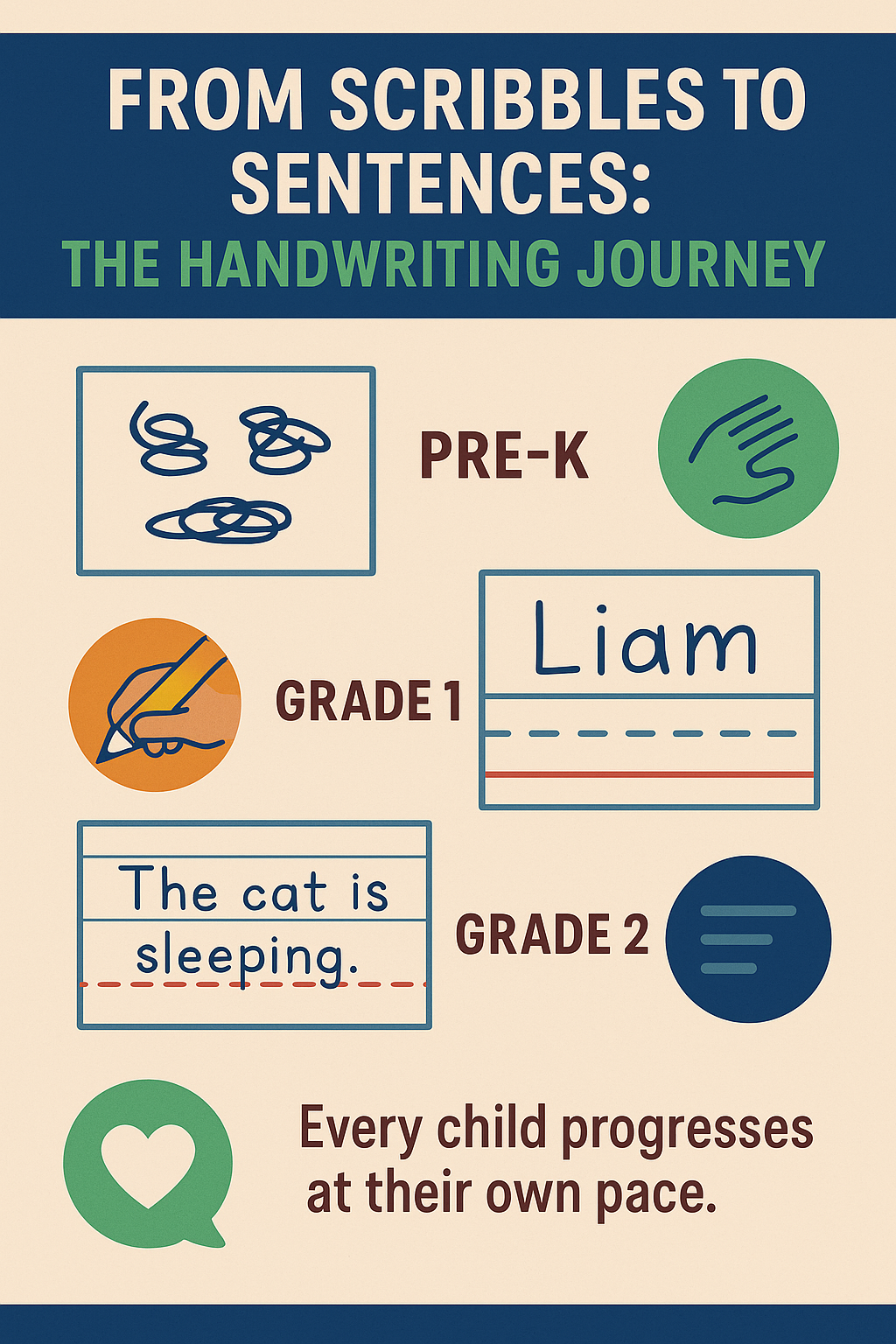The research is clear: handwriting supports young learners. But how? Before students can read, reason, or research, they must master one of the most fundamental academic skills: handwriting. While early education often emphasizes literacy and numeracy, writing by hand—especially in structured planners or activity books—forms the foundation for cognitive, motor, and emotional development.
In a digital-first world, it’s tempting to rely on screens for early learning. But evidence shows that handwriting boosts comprehension, fine motor skills, and classroom confidence, especially in the formative K–2 years.
Let’s explore how handwriting helps young learners succeed, and how schools can support this vital skill through tools like custom school planners.
Why Handwriting Still Matters in the Early Years
Handwriting is more than just a way to communicate. Handwriting supports young learners in a variety of ways. For young learners, it’s a full-body process involving:
- Fine motor coordination
- Visual tracking
- Cognitive sequencing
- Memory and focus
This multi-sensory engagement is why handwriting instruction in early grades has such a big impact. According to research in Developmental Psychology, children who practiced writing letters by hand showed increased brain activity in areas related to reading and language processing.
Handwriting vs. Typing in K–2 Learning & Development
| Skill Area | Handwriting | Typing |
|---|---|---|
| Fine motor development | ✅ Builds finger strength | ❌ Limited engagement |
| Letter recognition | ✅ Reinforced through motion | ❌ Passive visual learning |
| Focus and attention | ✅ Increased sustained focus | ❌ Easily distracted |
| Memory retention | ✅ Enhanced through movement | ❌ Weaker memory pathways |
| Grade Level | Age Range | Handwriting Milestones | Developmental Focus |
|---|---|---|---|
| Pre-K | 3–4 | • Imitates lines • Draws circles • Begins scribbling letters | • Gross motor skills • Early pencil grip |
| Kindergarten | 4–5 | • Writes name • Copies letters • Grip improves | • Pencil grip refinement • Intro to spacing |
| Grade 1 | 5–6 | • Writes full words • Improved spacing • More control | • Fine motor development • Letter size and spacing awareness |
| Grade 2 | 6–7 | • Writes complete sentences • Structure and legibility improve | • Mastery of tripod grip • Visual-spatial awareness |
How Handwriting Supports Young Learners by Building Cognitive Skills
The act of writing letters helps students understand them—visually, kinesthetically, and spatially. This leads to stronger connections in the brain between language, memory, and learning.
Writing by hand also activates the prefrontal cortex, the area of the brain responsible for attention and self-regulation—key areas for school readiness.
Visual: Age-Based Milestones for Writing
| Age | Developmental Milestone |
|---|---|
| 3–4 | Imitates lines, draws circles, begins scribbling letters |
| 4–5 | Writes name, copies letters, improves pencil grip |
| 5–6 | Writes full words, increased spacing, fine motor control |
| 6–7 | Writes complete sentences with structure and legibility |

The Role of Primary Planners in Handwriting
School planners aren’t just for older students. A well-designed primary school planner can be a powerful handwriting tool:
- Dotted lines for tracing and spacing
- Visual cues and symbols
- Daily routines with simple writing prompts
- Opportunities for repetition and reflection
Custom primary planners from School Planner Company offer handwriting-friendly layouts designed by educators to support motor skill development and cognitive growth.
Educator Tip
“Our first graders love their planners—it gives them a sense of independence, and the handwriting practice builds confidence. Parents notice the difference too.”
— Kindergarten Teacher, Illinois
FAQs: Handwriting Supports Young Learners
Why is handwriting important for early learners?
Handwriting supports young learners through literacy, motor development, and brain growth. It also improves memory, focus, and confidence in the classroom.
What age should handwriting instruction begin?
Informal handwriting begins around age 3–4 with scribbles and line tracing. Structured instruction typically starts in Pre-K or Kindergarten.
Can young students use planners effectively?
Yes! With the right design—simple prompts, space for drawing, and routine-building—a primary planner can be a powerful tool for early learners.
Does handwriting help with reading?
Absolutely. Handwriting supports young learners and reinforces phonics and letter recognition, essential steps in learning to read.
Handwriting is the First Step Toward Student Success
While education continues to evolve with digital tools, handwriting remains essential—especially for young learners. From gripping their first pencil to writing their first sentence, each step builds confidence and ability.
We believe in starting strong. Our planners for elementary school students are designed to support handwriting, build routines, and encourage every learner’s journey—from scribbles to success.
Want to see our custom handwriting-friendly primary planners? Request a free no-obligation quote today.